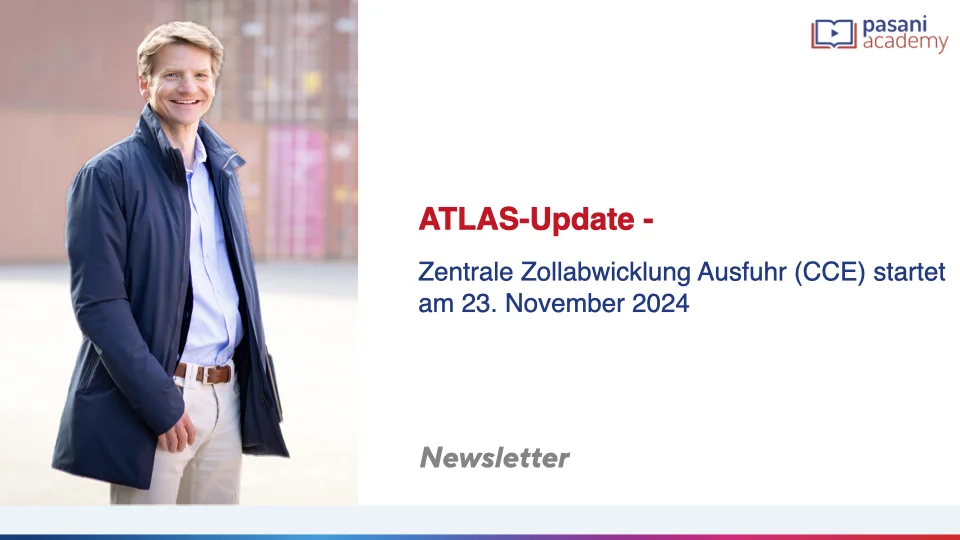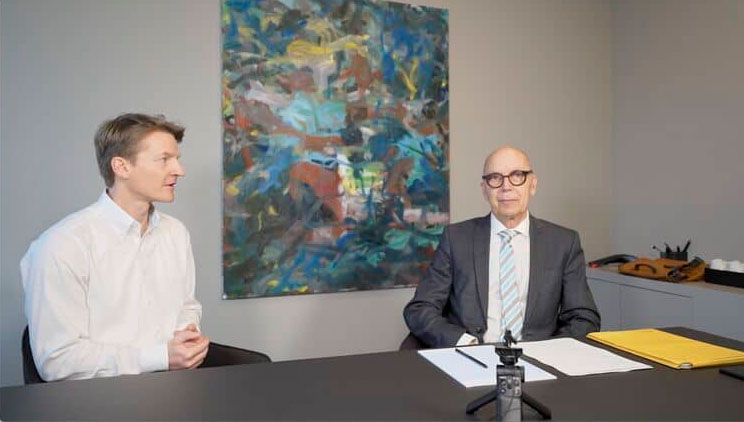ATLAS update: Central Customs Clearance Export (CCE) starts on 23 November 2024

The German customs administration has announced decisive innovations in ATLAS Info 0673/24 dated 12 November 2024: The introduction of Central Customs Clearance Export (CCE ) is imminent. From 23 November 2024, the procedure will be introduced in Germany with version ATLAS 10.1.2. Companies should prepare for the new processes in order to continue to organise their export processing efficiently.
What is Central Customs Clearance Export (CCE)?
CCE makes it possible to centralise export processes within the EU using electronic data exchange between customs administrations. This means that export declarations can be made at a central customs office of export, even if the customs office of presentation is located in another EU member state.
The procedure is based on closely networked, electronic communication between the customs authorities involved. This allows processes to be standardised and cooperation between the member states to be improved.
Requirements for participation
The use of the CCE requires the following points:
- Technical requirements: The Member State in which the customs office of presentation is located must be able to exchange messages with Germany. Companies can view this information via future ATLAS info.
- Updating the authorisations: Existing authorisations for Central Customs Clearance (CCL) must be coordinated with the countries involved.
For member states that do not fulfil the requirements, the previous procedure using a CCL authorisation remains in place.
How is the CCE implemented in Germany?
The implementation of the CCE in Germany is characterised by a high degree of automation. The most important processes at a glance:
- Waiting times
:Polylang placeholder do not modify
- Automated release
:Polylang placeholder do not modify
- Checks and controls
:Polylang placeholder do not modify
Changes to document requests
A key point in the new procedure concerns the submission of documents:
- The customs office of presentation requests the necessary documents via the customs office of export.
- However, companies are responsible for submitting these documents to the customs office of presentation independently.
The type of controls is differentiated using defined codes, which facilitates precise allocation. This ensures greater transparency and efficiency in the processes.
Retroactive export declarations: Introduction postponed
The option to make retroactive or subsequent export declarations using a CCL authorisation will not be available until 22 February 2025 with ATLAS 10.1.2, maintenance window 05. This delay was communicated in the current ATLAS info.
As soon as this function is activated, companies can subsequently declare export transactions, e.g. from an emergency procedure. It is important that the relevant evidence is submitted in good time in order to avoid delays.
What companies should do now
The introduction of CCE brings numerous advantages, but also requires internal processes to be adapted at an early stage. Companies should take the following measures:
- Review of authorisations: Existing licences should be reviewed with regard to the new requirements and updated if necessary.
- Employee training: All relevant departments should be informed about the changes and trained accordingly.
- IT adaptations: The systems should be adapted to the requirements of the new ATLAS version in good time.
Conclusion
Central Customs Clearance Export (CCE) represents a significant step forward in the modernisation of customs processes. Companies that familiarise themselves with the new regulations at an early stage can benefit from the advantages of more efficient and automated customs clearance.
Stay informed – follow our future posts on this topic and adapt your processes accordingly to ensure a smooth transition.
